Advance Copies: These are early versions of a new book shared with the publishing industry before the main release. These advanced copies may show slight variations from the final edition and offer a glimpse of the book’s early stage. They can have simple covers or be fully bound. Sometimes, these copies might include unique features not found in the public release, though the public one is still considered the true first edition.
Annotations: These are handwritten notes in the margins or on blank pages of a book, providing extra insights into the text.
Aquatint: An artistic technique involving copper plates and acid. Acid exposure creates different shades of gray on the plate, resembling watercolor washes. Despite the term “tint,” it’s a black-and-white process, often hand-colored.
Armorial: Refers to bindings featuring the original owner’s coat of arms or bookplates with their arms.
As Issued: This term highlights the original condition of a book, even if it might seem unusual. For instance, “with 19 pages of advertisements, as issued.”
As Usual: Used to explain common imperfections present in multiple copies of a book, almost expected due to their prevalence.
Association Copy: A book owned by someone connected to the author or the book’s content.
Autograph: (adj.) Describes a letter, document, or manuscript written by the author themselves.
Autograph Letter Signed: (ALS) A completely handwritten letter signed by the author.

